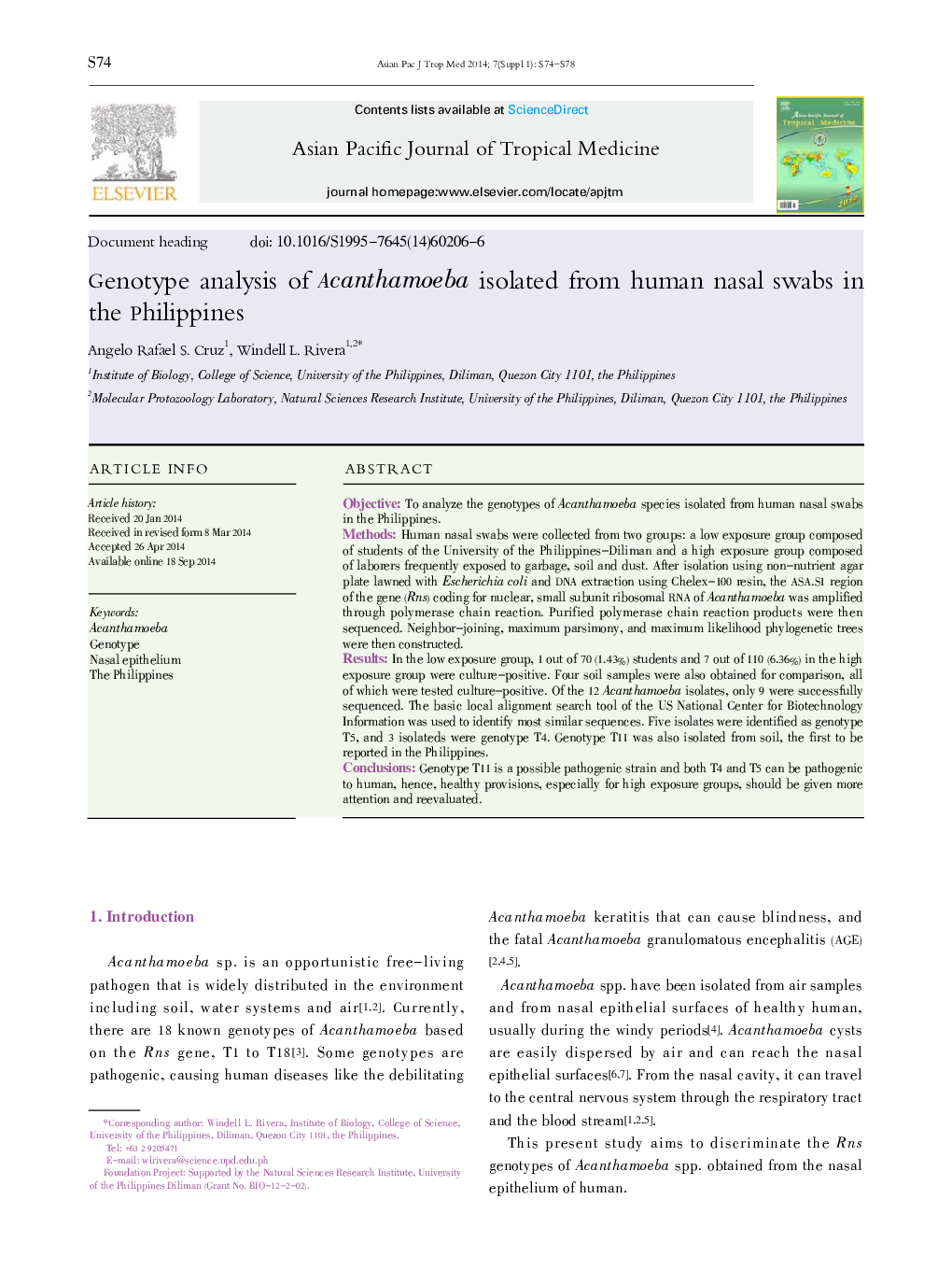| کد مقاله | کد نشریه | سال انتشار | مقاله انگلیسی | نسخه تمام متن |
|---|---|---|---|---|
| 3455906 | 1596033 | 2014 | 5 صفحه PDF | دانلود رایگان |

ObjectiveTo analyze the genotypes of Acanthamoeba species isolated from human nasal swabs in the Philippines.MethodsHuman nasal swabs were collected from two groups: a low exposure group composed of students of the University of the Philippines-Diliman and a high exposure group composed of laborers frequently exposed to garbage, soil and dust. After isolation using non-nutrient agar plate lawned with Escherichia coli and DNA extraction using Chelex-100 resin, the ASA.S1 region of the gene (Rns) coding for nuclear, small subunit ribosomal RNA of Acanthamoeba was amplified through polymerase chain reaction. Purified polymerase chain reaction products were then sequenced. Neighbor-joining, maximum parsimony, and maximum likelihood phylogenetic trees were then constructed.ResultsIn the low exposure group, 1 out of 70 (1.43%) students and 7 out of 110 (6.36%) in the high exposure group were culture-positive. Four soil samples were also obtained for comparison, all of which were tested culture-positive. Of the 12 Acanthamoeba isolates, only 9 were successfully sequenced. The basic local alignment search tool of the US National Center for Biotechnology Information was used to identify most similar sequences. Five isolates were identified as genotype T5, and 3 isolateds were genotype T4. Genotype T11 was also isolated from soil, the first to be reported in the Philippines.ConclusionsGenotype T11 is a possible pathogenic strain and both T4 and T5 can be pathogenic to human, hence, healthy provisions, especially for high exposure groups, should be given more attention and reevaluated.
Journal: Asian Pacific Journal of Tropical Medicine - Volume 7, Supplement 1, September 2014, Pages S74-S78